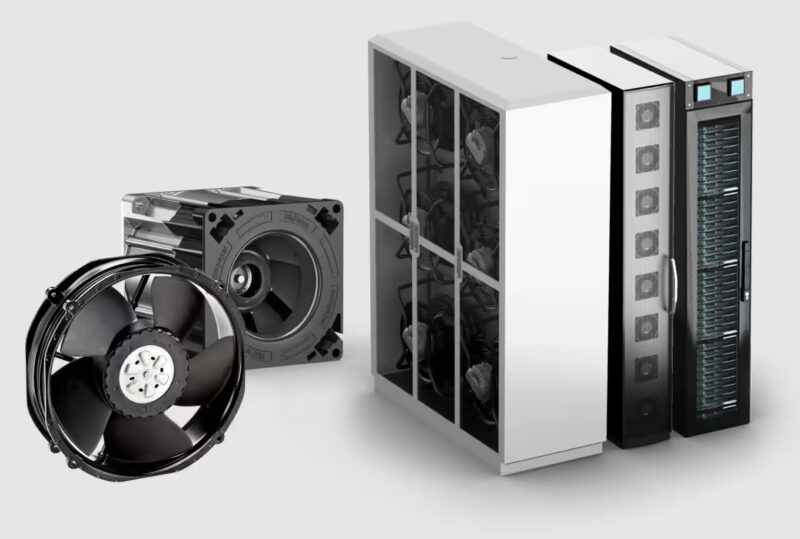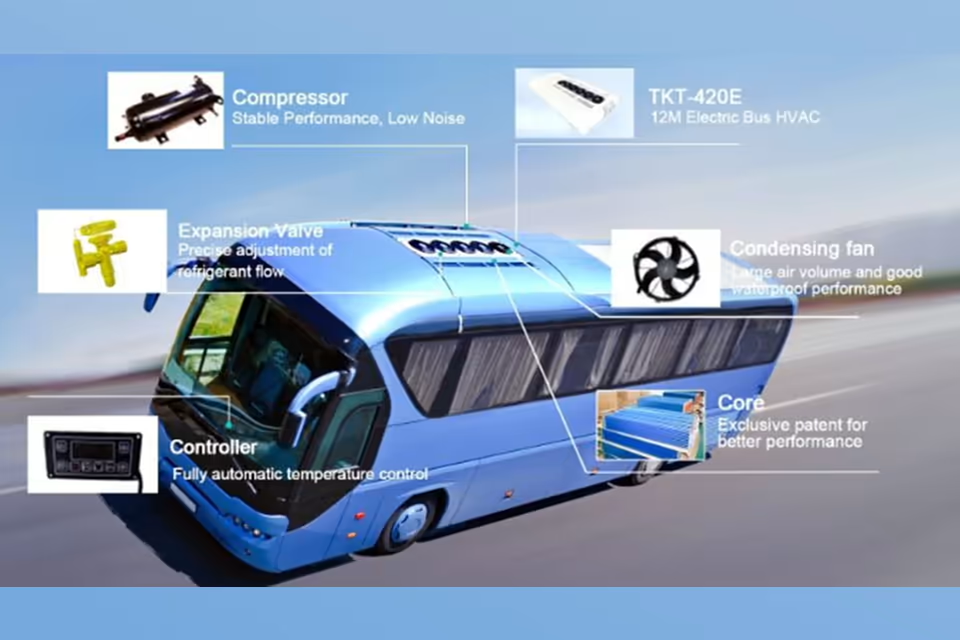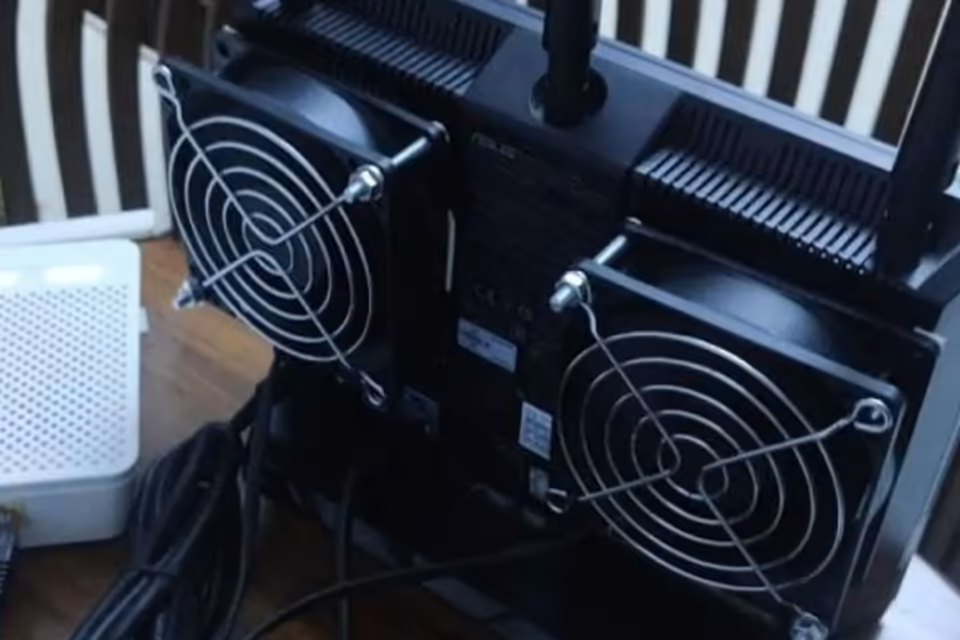مراوح التبريد هي مكونات لا غنى عنها في مراكز البيانات، حيث تعمل كخط دفاع أمامي في الإدارة الحرارية لضمان موثوقية وأداء مثالي للبنية التحتية الحيوية لتكنولوجيا المعلومات.
مع تصاعد قوة المعالجة في مراكز البيانات، يزداد توليد الحرارة بشكل كبير. وهذا يجعل آليات التبريد الفعالة ذات أهمية قصوى لمنع تعطل المعدات، وتحسين الكفاءة التشغيلية، وإدارة تكاليف الطاقة.
تعتبر مراوح التبريد أساسية لهذه العملية، حيث تسهل تدفق الهواء اللازم لتبديد الحرارة وتدعم مجموعة متنوعة من استراتيجيات التبريد، من الأنظمة التقليدية القائمة على الهواء إلى حلول التبريد السائل المتقدمة.
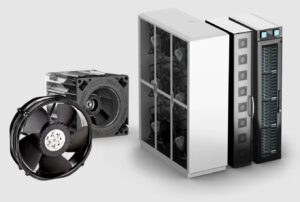
آليات وأنظمة التبريد المتطورة
تعتبر مراوح التبريد جزءًا لا يتجزأ من معماريات التبريد التقليدية والمبتكرة على حد سواء، مما يضمن عمل معدات تكنولوجيا المعلومات الحيوية ضمن الحدود الحرارية الآمنة.
التبريد القائم على الهواء
تظل هذه استراتيجية سائدة، خاصة للمرافق ذات كثافات الرفوف التي تصل إلى 50 كيلووات. في أبسط مستوياتها، يتضمن ذلك التبريد على مستوى الرف، حيث تقوم المراوح الموجودة داخل رفوف الخوادم بتبديد الحرارة مباشرة من المكونات عالية الأداء مثل وحدات المعالجة المركزية (CPUs) ووحدات معالجة الرسوميات (GPUs).
تتضمن الاستراتيجيات الأكثر تطوراً احتواء الممر الساخن/البارد، والذي يستخدم حواجز مادية لمنع اختلاط هواء العادم الساخن بهواء السحب البارد، مما يحسن كفاءة التبريد بشكل كبير.
Another method, evaporative cooling, uses fans to draw in outside air and cool it through water evaporation, significantly reducing energy consumption in suitable climates.
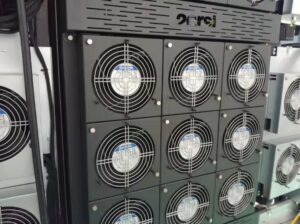
تحسين كفاءة الطاقة في التبريد
With cooling accounting for a substantial portion of a data center’s energy budget, optimizing fan performance is a primary focus for reducing operational costs.
Fan Speed Control
One of the most effective strategies is controlling fan speed based on the real-time cooling demand. Implementing Variable Frequency Drives (VFDs) allows fans to slow down when the thermal load is low, which can result in energy savings of up to 66%. This dynamic adjustment is crucial in modern facilities where workloads and subsequent heat generation can fluctuate significantly
Electronically Commutated (EC) Fan
EC fans represent a major advancement in efficiency. Their design includes an intelligent, integrated motor that offers superior controllability.
The power draw of an EC fan is related to the cube of its speed, meaning that even a small reduction in speed leads to a substantial decrease in energy consumption without compromising performance. Upgrading to EC fans is a key strategy for enhancing a data center’s Power Usage Effectiveness (PUE).
التحديات الرئيسية والحلول الحديثة
Data centers face persistent challenges related to cooling efficiency, system integration, and environmental contamination.
Challenges
The primary challenge is managing ever-increasing energy consumption. Integrating new, complex cooling systems into existing infrastructure can also be difficult. Furthermore, contamination risks from mixing outside and inside air, and fouling from microbial growth or corrosion, can impair cooling performance and efficiency.
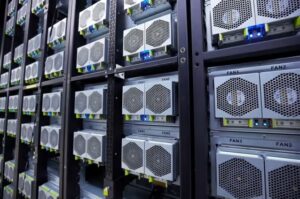
Solutions
The industry is responding with innovative solutions. Adopting advanced technologies like liquid and evaporative cooling is a key trend. Implementing structured maintenance programs that include regular cleaning and inspections is essential for mitigating fouling and ensuring system longevity.
Finally, advanced monitoring systems that incorporate AI and machine learning can optimize cooling operations in real-time, predict potential failures, and lead to significant energy savings.
مستقبل تبريد مراكز البيانات
Looking ahead, the landscape of data center cooling is set for continued innovation. Emerging technologies like geothermal cooling, advanced evaporative techniques, and AI-driven management systems are poised to further enhance efficiency and sustainability.
As data center operators strive to boost performance while minimizing their environmental footprint, the strategic deployment and intelligent management of cooling technologies—with fans remaining a core component—will be more critical than ever in shaping the future of digital infrastructure.

